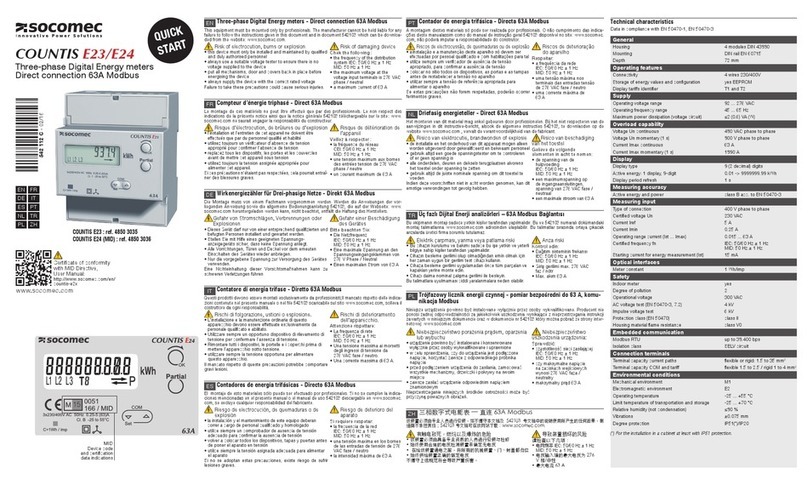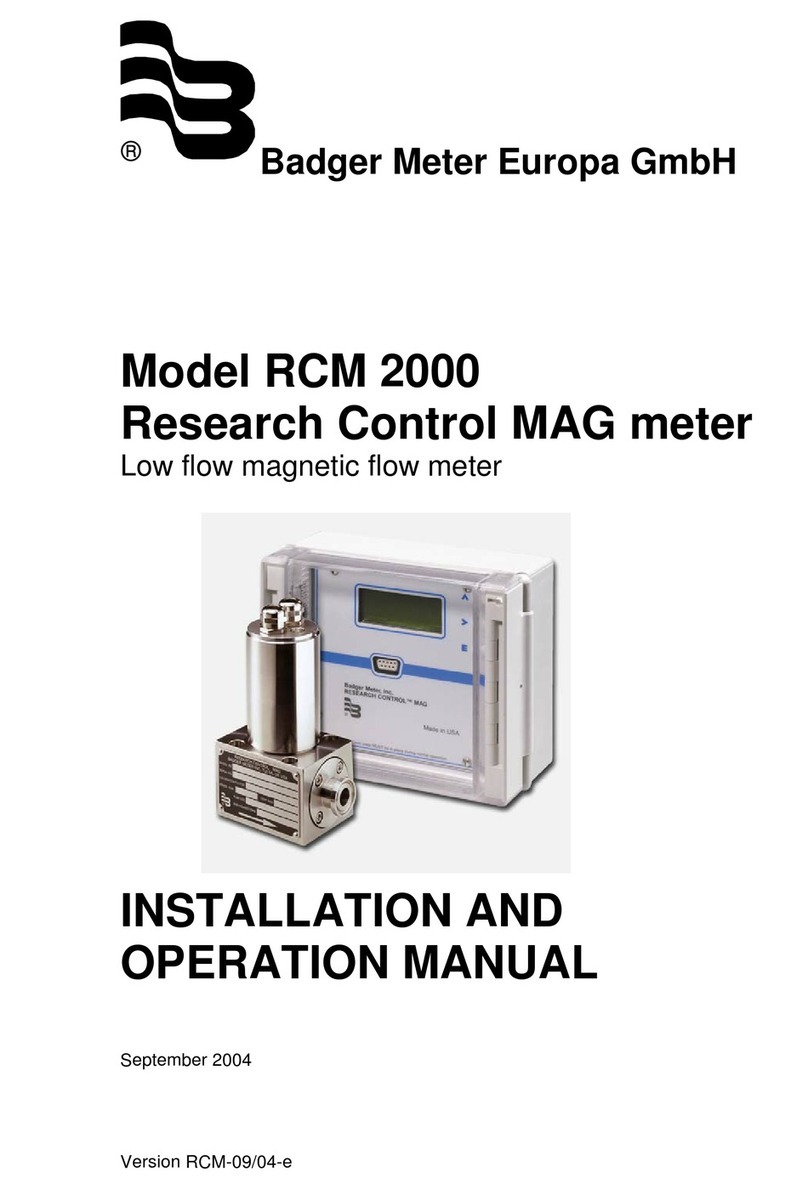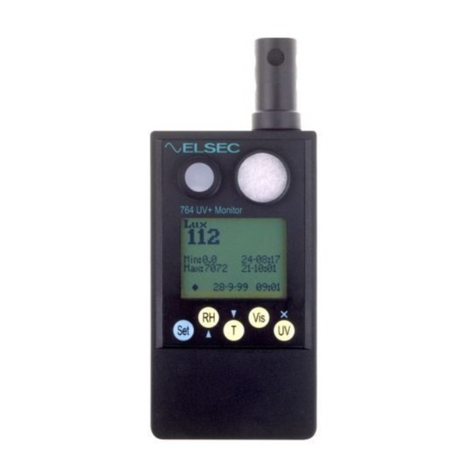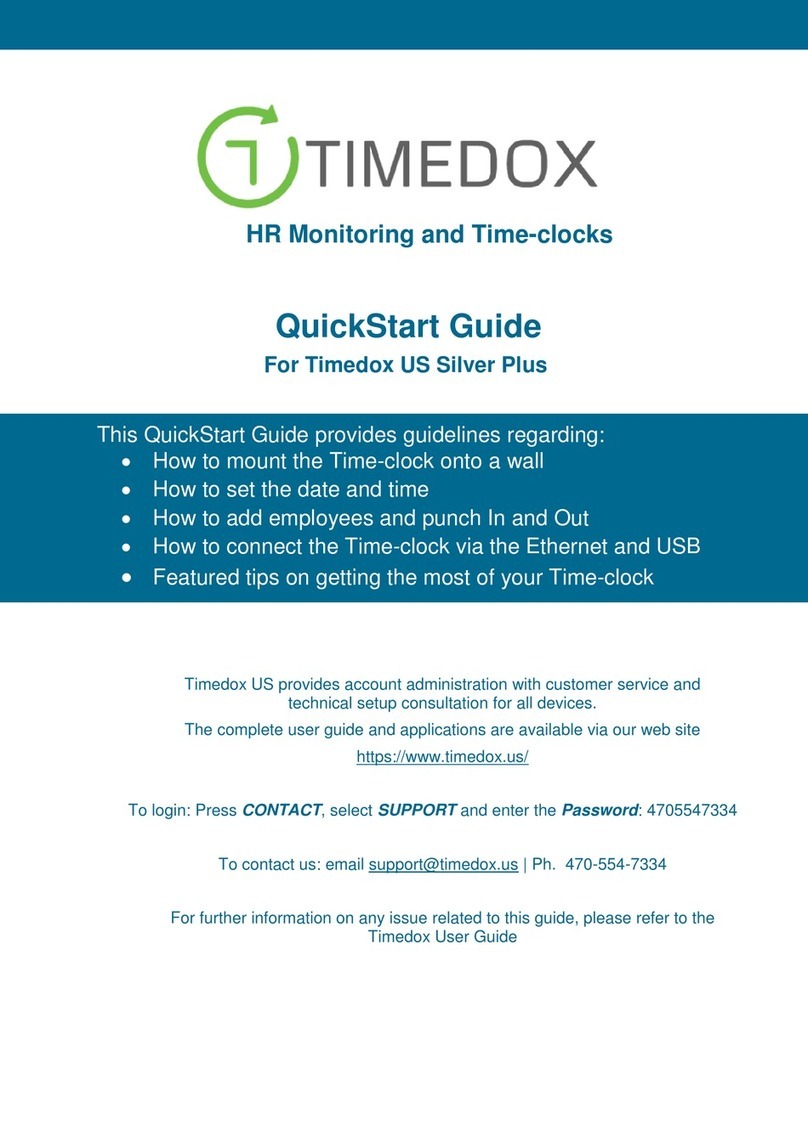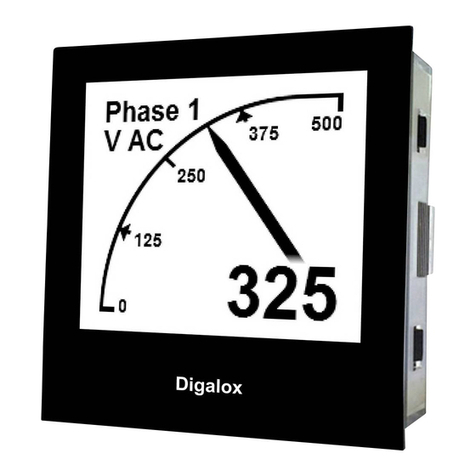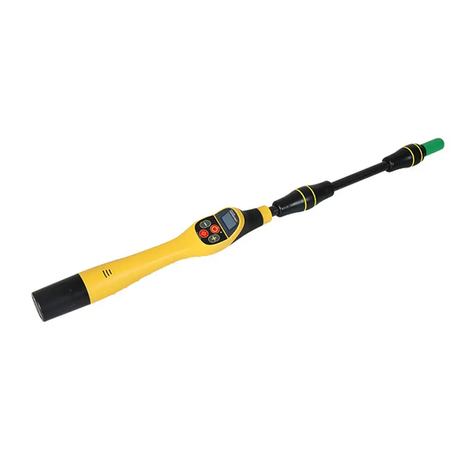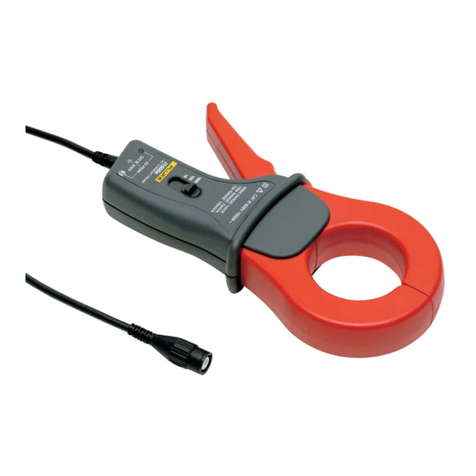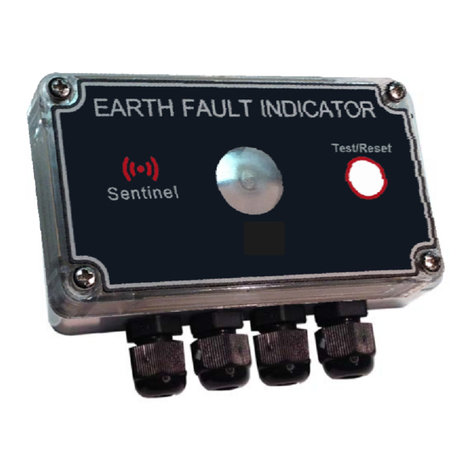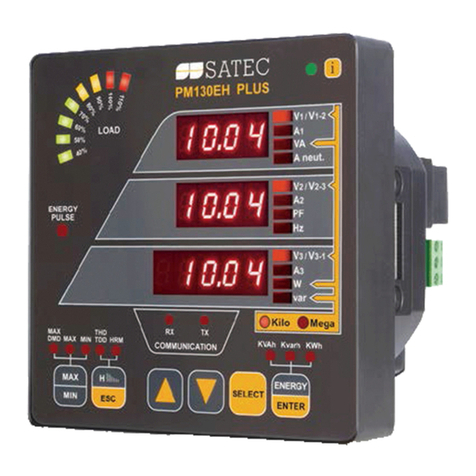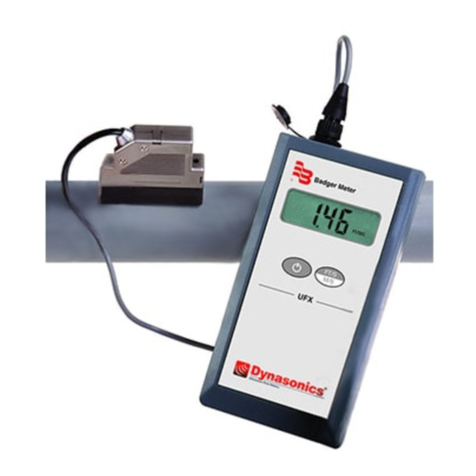Interscan Corporation 4000 Series User manual

1
Instruction Manual
4000 Series Compact Portable Analyzer
Interscan Corporation
www.calcert.com sales@calcert.com1.800.544.2843 0
5
10
15
20
25
30

-II -
INTERSCAN CORPORATION
4000 SERIES MANUAL
TABLE OF CONTENTSTABLE OF CONTENTS
SECTION TITLE PAGE
1.0 Equipment Description 1
2.0 General Information 3
3.0 Operating Instructions 5
4.0 Special Instructions 8
5.0 Calibration 9
6.0 General Maintenance 15
7.0 Troubleshooting 18
8.0 Warranty 19
9.0 Parts List 20
10.0 Schematics 21
11.0 Return Authorization 22
12.0 Index 23
www.calcert.com sales@calcert.com1.800.544.2843 0
5
10
15
20
25
30

1
Equipment Description
1.1 Front Panel
Designation Function
ALARM LIGHT: Lamp. Flashes ON/OFF when alarm set point is exceeded.
ALARM SET: 25-Turn potentiometer with a screwdriver adjustment. Sets
the alarm trip point at the desired PPM level. A LCD is
provided on some models.
AUIDIBLE ALARM: Horn. Sounds when alarm set point is exceeded.
FUNCTION SWITCH: Rotary switch as follows:
OFF: Analyzer power is OFF.
ZERO: Analyzer power is ON (pump is OFF).
SAMPLE: Analyzer power and pump are on. In this position the
instrument is zeroed, sample measurements are taken and
calibration is done.
BAT. TEST A: Indicates state of charge of the Nickel-Cadmium batteries at
the panel meter. These batteries power the pump and the
recorder (if provided).
BAT. TEST B: Indicates state of charge of the “C” size alkaline batteries at
the panel meter. These batteries power the circuitry and are
NOT re-chargeable.
POWER LIGHT: Lamp. When illuminated, indicates that unit is turned on (via
FUNCTION Switch) to any position other than OFF.
RANGE: Toggle switch. Allows multiple ranges to be selected. Lo=
Low Range, Hi= High Range.
SPAN: 25-Turn potentiometer with a screwdriver adjustment.
Sets the meter to correspond to the concentration of the
calibration gas used for calibrating the instrument.
ZERO: 10-Turn Potentiometer. Allows the meter to be adjusted to
zero by compensating for any background signal.
Section
1
www.calcert.com sales@calcert.com1.800.544.2843 0
5
10
15
20
25
30

- 2 -
1.2 Rear Panel
Designation Function
INLET: ¼” OD compression gas fitting.
OUTLET: ¼” OD compression gas fitting
RECORDER OUTPUT: ¼” phone jack for #4990-B-36 recorder output cable.
WARNING: DO NOT CONNECT TO A RECORDER IF IN A HAZARDOUS
ATMOSPHERE.
CHARGER INPUT: 3.5mm phone jack for 9V DC, 100mA charger input.
WARNING: DO NOT CONNECT BATTERY CHARGER IF IN A
HAZARDOUS ATMOSPHERE.
www.calcert.com sales@calcert.com1.800.544.2843 0
5
10
15
20
25
30

- 3 -
General Information
See Section 4.0 for Special Instructions
2.1 Monitor Description
The INTERSCAN 4000 Series Portable Analyzer is a direct-reading, battery-operated
unit with integral sample pump. The detection element is an electro-chemical voltametric
sensor, designed for long term, reliable performance.
In operation, sample gas is drawn through the sensor. Gas concentration is displayed
directly in parts per million. Since the method analysis is not absolute, prior calibration
against a Known standard is required. ALL INTERSCAN MONITORS ARE
CALIBRATED AT THE FACTORT PRIOR TO SHIPMENT. Exhaustive tests have shown
the method to be linear, so that calibration at a single concentration is sufficient,
independent of the range.
Essential components of the unit are the sensor, batteries and electronic circuitry
including: zero compensation, sensor biasing, amplification, alarm elements, sample
pump and display.
2.2 The INTERSCAN Sensor
The patented two-electrode configuration of the INTERSCAN sensor has several
advantages not found in either 3-electrode sample-draw sensors or in 2 or 3-electrode
diffusion-mode sensors. The INTERSCAN sensor electrolyte is immobilized, similar to the
electrolyte in flashlight and nickel-cadmium batteries. One need not be concerned
therefore, about cell rupture or acid damage to the instrument. The absence of free
electrolyte eliminates undesirable sensor noise, particularly when high amplifier gain is
required for low concentration measurements. Unlike 3-electrode sensors, the
INTERSCAN sensor has a sealed reservoir. Not only does this give a much longer sensor
life, but also the possibility of reference electrode contamination is eliminated. Unlike the 3-
electrode sensors, which require air to operate, the INTERSCAN sensor may be used in
an anaerobic environment if desired.
Section
2
www.calcert.com sales@calcert.com1.800.544.2843 0
5
10
15
20
25
30

- 4 -
The INTERSCAN sample-draw sensor is a high sensitivity detector with sensitivity 50
to 200 times greater than a diffusion-mode sensor, depending on the gas type. A much
lower minimum detectability is possible… an important requirement for measuring gas that
has a low TLV.
2.3 Principle of Operation
The INTERSCAN voltametric sensor (U. S. Patent Number 4,017,373) is an
electrochemical gas detector operating under diffusion-controlled conditions.
Gas molecules from the sample are adsorbed on an electro catalytic-sensing
electrode, after passing through a diffusion medium, and are electrochemically reacted at
an appropriate sensing electrode potential. This reaction generates an electric current
directly proportional to the gas concentration. This current is converted to a voltage for
meter or recorder readout:
The diffusion limited current; ilim is directly proportional to the gas concentration
according to the simplified equation:
ilim = nFADC
≈≈
Where ilim is the limiting diffusion current in amps, Fis the Faraday constant (96,500
coulombs), Ais the reaction interfacial area in cm2, nis the number of electrons per mole
reactant, ≈≈ is the diffusion path length, Cis the gas concentration moles/cm3), and Dis the
gas diffusion constant, representing the product of the permeability and solubility
coefficients of the gas in the diffusion medium.
An external voltage bias maintains a constant potential on the sensing electrode,
relative to a nonpolarizable reference counter electrode in the 2-electrode INTERSCAN
sensor. "Nonpolarizable" means that the counter electrode can sustain acurrent flow
without suffering a change in potential. Thus, the counter electrode acts also as a
reference electrode, thereby voiding the need for a third electrode and a feedback circuit,
as would be required for sensors using a polarizable air counter-electrode.
www.calcert.com sales@calcert.com1.800.544.2843 0
5
10
15
20
25
30

- 5 -
Operating Instructions
See Section 4.0 for Special Instructions
Your INTERSCAN monitor has been calibrated at the Factory and is ready for use.
3.0 Inspection
Open the box (es) and inspect for damage immediately upon receipt. Examine the
Contents list and ensure all items that were shipped have been received. Contact
INTERSCAN and report any damaged or missing items immediately. Items discovered
“missing” more than 30 days after shipping, will not be replaced at no charge.
3.1 Checking the Batteries
Battery condition is indicated by the analyzer panel meter. Prior to field use, the
battery condition must be checked. Turn the FUNCTION switch to BAT. TEST “A”. This
position tests the condition of the re-chargeable pump batteries. If the meter is reading in
the lower half of battery check region, the batteries either need to be charged or replaced.
(see Section 6.2)
Turn the FUNCTION switch to BAT. TEST “B”. This position tests the analyzer
amplifier batteries. These batteries supply power to the sensor and keep it in a state of
readiness whether the analyzer is on or not. To be safe, it is good practice to replace
these batteries before the indicator reaches the “REPLACE” line.
Section
3
www.calcert.com sales@calcert.com1.800.544.2843 0
5
10
15
20
25
30

- 6 -
3.2 Setting the Alarm (if applicable)
Normally, the alarm is set at the Factory at 50% of full scale. The alarm can be reset
to any desired level by following the procedure below.
Set FUNCTION switch to ZERO. Select low range on multi-range units. Using the
ZERO control, advance the meter to the desired alarm set point. Single high range units
may require high ppm gas to set alarm. Adjust the ALARM SET control until the alarm
sounds. Adjust the ZERO control slightly counterclockwise until the alarm is silent. Slowly
adjust the ZERO control clockwise until the alarm sounds. Re-adjust the ALARM SET
control if necessary. Adjust the ZERO control for a reading of “0” on the meter.
NOTE: The alarm set point is attenuated via the RANGE switch to the same meter
position (% of full scale), rather than the same numerical value.
e.g. In a 0-100/0-500 ppm dual range unit, a 50 ppm set point on the low range
would become a 250 ppm set point when switched to the high range.
3.3 Zeroing the Instrument
The unit should always be adjusted to read “0” on the meter just prior to gas sampling.
If the analyzer is Formaldehyde, Hydrazine, Ethylene Oxide, or if the analyzer full scale
measuring range is 2 ppm or less, zero adjustments must be made in the SAMPLEmode,
i.e. with the pump on, in free air of interfering gases. If necessary, use zero air or a filter
type C-12 to zero in the sampling area. When using C-12 zero filter, connect externally to
gas inlet. Allow approximately 20 minutes or until the meter needle is stable before
adjusting ZERO control to zero meter. Remove the C-12 filter.
Set the FUNCTION switch to the ZERO position. Adjust the meter to “0” with the
ZERO control knob. If the analyzer has more than one measuring range, always use the
lowest range to set the zero.
3.4 Sampling
Set the FUNCTION switch to SAMPLE to actuate the pump. The analyzer is now in
the sampling mode. If the INLET or OUTLET is blocked, the pump will probably stall. To
restart the pump, set the FUNCTION switch to ZERO momentarily and then switch again
to SAMPLE.
www.calcert.com sales@calcert.com1.800.544.2843 0
5
10
15
20
25
30

- 7 -
Nominal sample rate is approximately 1.0 liter per minute, ±0.2 liter per minute. The
Average sample time, starting with fully charged “C” batteries, is 12 hours. If the
BATTERY TEST “A” indication is down to 25% of the battery test region, the flow rate
may have started to decrease. This is usually not a problem unless very precise readings
are required. This is the reason for the precautionary statement in paragraph 6.2.
3.5 Sample Pump Flow Control
The sample pump flow rate is controlled by an adjustable voltage regulator circuit. The
flow rate is factory set at approximately 1 liter/minute. If necessary, it may be re-adjusted,
however, a flowmeter is required to set the new flow rate.R28, located at the bottom of the
circuit board, controls the adjustment.
NOTE: Any change in flow rate will change the calibration. Analyzer MUST be re-
calibrated if flow rate has changed.
www.calcert.com sales@calcert.com1.800.544.2843 0
5
10
15
20
25
30

- 8 -
Special Instructions
Not Applicable for this Instrument
Section
4
www.calcert.com sales@calcert.com1.800.544.2843 0
5
10
15
20
25
30

- 9 -
Calibration
See Section 4 for Special Instructions
5.1 Introduction
It is not necessary to calibrate the monitor when received from the Factory, or from an
INTERSCAN distributor. All INTERSCAN monitors are calibrated at the Factory prior to
shipment. Unless the SPAN adjust is inadvertently changed, there is no need to calibrate
the monitor until it has seen considerable usage.
There is no easy answer as to when a monitor should be calibrated. This is strictly a
function of the application. INTERSCAN monitors can probably go for months without
recalibration. Again, it is a function of usage. The need for calibration is to compensate for
any possible decrease in sensor sensitivity. The primary cause of sensitivity decrease is
excessive loss of water by evaporation. A secondary cause may be by contamination from
unknown sources. H2S sensors show an additional decrease in sensitivity due to internal
sulfur formation, the rate of which depends on the gas concentration.
A good recommendation is to calibrate the monitor every 3 months. A record should
be kept of the ppm concentration used to calibrate, as well as the ppm concentration
displayed by the monitor prior to adjusting the SPAN adjust. If the difference between
these two values is unacceptably high (>10% for example), the monitor should be
calibrated more frequently. If the difference is well within an acceptable tolerance (<2% for
example), calibrations can be performed less frequently.
The instrument is calibrated by introducing a known concentration of gas and
adjusting the SPAN control to the proper ppm level. This fact requires that the analyzed
ppm of the gas be accurate. The sources of calibration gas standards include
commercially available gas mixtures diluted with air or nitrogen in cylinders, permeation
devices, and user dilution of concentrated or high ppm cylinder gases.
Unless cylinder gases are available, most users are either not properly equipped to
perform acceptable calibrations, or do not want to be bothered with the procedures
necessary to attain an accurate calibration. Added to this is the uncertainty of the labeled
ppm value of cylinder gases due to instability over a time period. The reliability varies
among span gas manufacturers.
For the above reasons, INTERSCAN offers their "Electronic Calibration Service"
(ECS), which permits the user to calibrate their monitors without the use of gas.
Section
5
www.calcert.com sales@calcert.com1.800.544.2843 0
5
10
15
20
25
30

- 10 -
Calibration is accomplished by quick and simple adjustments of the ZERO and SPAN
controls using a digital voltmeter. See the attached information sheet on ECS.
Calibration can be particularly difficult in the case of Chlorine and HCl gases which are
easily chemisorbed, even by chemically inert tubing. HCl calibration is more complex
because of the high moisture solubility. ECS is especially recommended for Chlorine and
HCl monitors for time saving, trouble-free and reliable calibration. ECS is also strongly
recommended for Formaldehyde (HCHO) monitors. Formaldehyde permeation tubes
(polyoxymethylene) require a calibrator with a controlled temperature of 90° C.
5.2 INTERSCAN’S Electronic Calibration Service
The factory recommended procedure for calibrating all INTERSCAN instruments,
involves the use of span gas or a permeation device. Besides being essential for
calibration, having a known certified gas standard on hand allows the user to test the
instrument at any time to determine that it “really works”.
However, there will be times and circumstances in which calibration using span gas or
permeation devices is inconvenient. For this reason, INTERSCAN has developed the
Electronic Calibration Service (ECS).
A certified spare sensor is kept on hand to be put into the instrument, while the
presently used sensor is sent back to the factory for re-certification. The ECS certification,
illustrated on the last page of this section, details zero and span adjustments that are to be
made on the instrument, to set it up with the specified, newly certified sensor.
As indicated on the certification sheet, the ECS program verifies sensor sensitivity
only. It does not certify the instrument as a whole. Most importantly, the ECS program is
not a substitute for basic instrument maintenance, nor does it check for malfunction of the
instrument components.
5.3 Calibration Gas Standards
Low part-per-million gas mixtures (in air or nitrogen) are available, with few
exceptions, in pressurized cylinders. The major concern in using commercially-available,
low ppm mixes of such active gases as SO2, H2S, NO, NO2, Cl2, etc., is their reliability.
The analysis shown on the label is applicable only at the time the analysis was performed.
Concentration stability with time varies widely as a function of the gas mix, its container
and the manufacturer. Moreover, changes in concentration are not slight. The actual
concentration of an unstable gas may be one-tenth of its labeled value. Of particular
concern is the stability of H2S and SO2mixtures. Some commercially available mixtures
www.calcert.com sales@calcert.com1.800.544.2843 0
5
10
15
20
25
30

- 11 -
are unstable, in some cases, in less than a month. INTERSCAN should be consulted for
recommendations on commercially available gas mixtures.
An alternative source of calibration gas is the use of permeation devices containing
the liquefied gas under pressure. Permeation of the gas in nanogram-per-minute rates,
permits the generation of a desired concentration in an air or nitrogen carrier. Varying the
temperature, flow rate and emission rate characteristics gives a fairly wide range of gas
concentrations. Many gases, including H
2S, SO2, NO2, Cl2, HCl, HCN and Hydrazine
(INTERSCAN analyzers are available for all these gases), are ideally suitable to the
permeation device technique. With the exception of sophisticated laboratory dilution
techniques, Cl2, HCl and Hydrazine (or MMH and UDMH) permeation devices should only
be used for these gases.
The Teflon tube O'Keefe type of permeation device for H
2S requires frequent
calibration or independent analytical confirmation, due to a changing permeability caused
by sulfur deposition in the walls of the tube. These ARE NOT recommended.
An excellent source of calibration gas, is the gas syringe dilution of high ppm (several
hundred) gas mixtures, or 100% gas. While this is a reliable and accurate method, it is not
convenient for most field applications.
5.4 Sample Bag Calibration
Whatever the source of calibration gas, the recommended method is to collect the gas
in the proper sample bag, which is then attached to the analyzer. The calibration gas is
drawn through the sensor by the sample pump. An exception to the use of a sample bag
is for those gases that are reactive with, or chemisorbed by the bag itself (e.g. Chlorine,
Hydrazine, see Section 5.8). Teflon or "tedlar" bags are suitable for H2S, SO2, NO and
NO2. Several bag materials are suitable for CO. Contact the Factory for recommendations.
The sample bag method is the factory-recommended method. Since an internal pump
is used, the same flow rate conditions during the sample and the calibrate modes are
assured, eliminating errors due to flow rate differences. For most applications, using a bag
is the simplest procedure. A regulated pressurized cylinder fitted with a tee-manifold and
unrestricted vent is a good procedure, as long as the flow rate of the gas exceeds that of
the sample pump.
5.5 Permeation Devices
The use of a permeation device is prescribed as the preferred method for calibrating
most instruments, excluding the CO and NO monitors. In addition, it is the simplest
www.calcert.com sales@calcert.com1.800.544.2843 0
5
10
15
20
25
30

- 12 -
method to use, and probably the most accurate. The ppm concentration varies directly
with the permeation rate, and inversely with the flow rate of the carrier gas. The
permeation rate is a logarithmic function of temperature in degrees Celsius. (see Section
5.7)
5.5.1 Auxiliary Equipment
Besides the permeation device, an accurate low flow rotameter, cylinder of zero air or
nitrogen, and a thermometer are required. A pump may be used, as an alternative to zero
air or nitrogen. Incoming air should be scrubbed for possible interferences. In all cases,
only Teflon, Bev-A-Line IV or polypropylene tubing should be used downstream of the
permeation device, and preferably should be as short as possible. Tygon or rubber tubing
should NEVER BE USED.
5.6 Calibrators
Several calibrators utilizing permeation tubes are available on the market. These
range in complexity and price, and are found in both fixed location and portable models.
Because some of these may be more sophisticated than required for many monitoring
applications, the customer should consult the factory.
NOTE: Refer to Section 4.0 for important information relative to calibrators for Hydrazine.
5.7 Permeation Rate And PPM Calculation
Permeation rate information is included with the permeation device by the
manufacturer, specified for some temperature. The rate at other temperatures is
calculated from:
log P = log Pm ± A (rrt°C)
Where Pm is the given permeation rate in ng/min. and A, a constant, depending on
the permeation device. This is either given direct by the permeation device manufacturer,
or is calculated as the slope of the above equation, from known permeation rates at two
temperatures. Some manufacturers include the log P-temperature chart, from which the
permeation rate can be read directly.
www.calcert.com sales@calcert.com1.800.544.2843 0
5
10
15
20
25
30

- 13 -
The gas concentration is calculated from: ppm = PxK
F
Where Kis and Fis the carrier gas flow rate, in ml/min, through the
permeation device.
5.8 Chemisorbable Gases
See Section 4.0 for Special Instructions
Chemisorbable and moisture soluble gases, such as Chlorine, HCl and Hydrazine
require that the carrier gas used with the permeation device be totally dry. This requires
an efficient drying agent upstream to the U-tube containing the vial.
Even so, under very humid conditions, the drying agent is rapidly saturated, so only
dry zero air or nitrogen in cylinders should be used. To emphasize the importance of this,
a loss of 73% of Chlorine has been observed under high humidity conditions (by
conversion to HCl and HClO). An even greater loss has been observed in the case of
Hydrogen chloride. This is aggravated by the restriction to low ppm values, due to the low
permeation rates of the available HCl permeation devices. With the user being unaware of
these losses, not only is the instrument grossly out of calibration but its over-calibrated
condition results in excessive instability.
Such gases require the use of a TEE or manifold procedure of calibration. Dried and
scrubbed air or nitrogen carrier gas is passed at a known and constant flow rate through a
chamber containing the permeation tube. The chamber effluent is passed into a TEE
manifold with unrestricted vent at its opposite end. The side arm of the TEE manifold is
connected to the instrument inlet. This connecting tube, and that linking the permeation
tube chamber with the TEE manifold, as well as the TEE manifold itself, must be
polypropylene or Teflon. The tubing should be as short as possible.
The system is working properly when no gas flows into the analyzer with the sample
pump off. After allowing sufficient time for the permeation tube to equilibrate (under
temperature and flow conditions), the sample pump is switched on, drawing the calibration
gas through the sensor. The flow rate of the carrier gas should exceed that of the sample
pump in the analyzer, to avoid dilution from the vent.
Where good temperature control, or elevated bath temperature (in excess of ambient)
are required, the flow rate through the permeation tube should be restricted to 100 ml/min,
and diluted with room air to give a total flow rate in excess of the sample pump. Gas
concentration is calculated using the total combined flow rates.
Chemisorption by the walls of the connecting tube, and by the filter itself, is a time
phenomenon, decreasing gradually over a half-hour period, giving the effect of slow
sensor response. True sensor response time requires preconditioning of the connecting
tube by allowing the Chlorine or other chemisorbable gases to be drawn through the
tubing for some time prior to attachment to the analyzer. This is particularly important for
extended life permeation tubes that generate low ppm levels. (For optimum results, such
24.46
Mol.Wt.
www.calcert.com sales@calcert.com1.800.544.2843 0
5
10
15
20
25
30

- 14 -
tubes should not be less than 3 cm of active length. These should last more than 8 months
with refrigeration.) This requires bypassing the sensor during the pre-conditioning.
Because of degassing, pre-conditioning is not permanent. This chemisorption effect is not
serious, because sensor response to changes in gas concentration is always rapid, even
during the initial adsorption period.
5.9 Permeation Tube Manufacturers
With the exception of HCHO and Hydrazine gases, most standard permeation
devices can be obtained from VICI Metronics (Santa Clara, California), and Kin-Tek
(Texas City, Texas). The only recommended permeation device for HCl monitors is VICI
Metronics' HCl wafer. For Hydrazine (or MMH and UDMH), & Formaldehyde the factory
recommends only the 10 cm Kin-Tek permeation tube.
5.10 Calibration Procedure
See Section 4.0 for Special Instructions
1. Select the range (optional) suitable for the concentration of the calibration gas. (Calibration in one
range set the calibration for all ranges).
2. Set the FUNCTION switch to ZERO and zero the analyzer with the ZERO control. If necessary,
allow a few moments to achieve a stable setting before making any adjustment.
3. For all gases, except Chlorine or other chemisorbable types, fill the 4 to 5 liter sample bag with
calibration gas, and attach it to the external inlet fitting. This is best done by attaching a short length
(2 inch/) of 5/16 inch (7.9 mm) O.D. flexible tubing to the sample bag nipple, then attaching the
tubing to a 2 inch (51 mm) length of ¼ inch (6.4 mm) O.D. rigid tubing contained within a gas fitting
nut securely fastened to the inlet fitting.
4. Set the FUNCTION switch to SAMPLE
5. Allow 2 to 3 minutes for the meter to stabilize, and by using the SPAN control, set the meter to
indicate the calibration gas concentration being used.
6. Check the ZERO and SPAN settings, and re-adjust, if required.
7. Remove the sample bag from the analyzer and allow the meter to return to zero.
8. The instrument is now calibrated and set up for operation.
www.calcert.com sales@calcert.com1.800.544.2843 0
5
10
15
20
25
30

- 15 -
General Maintenance
See Section 4.0 for Special Instructions
6.1 Battery Life
Because of high current requirement of the amplifiers, “C” Size Alkaline battery life is
limited to 4-6 weeks, whether the unit is operating or not. Instrument malfunction, as a
result of low battery, will show up as either inability to zero the monitor or clipping of the
meter at a fixed reading below full scale.
Nickel-cadmium battery life is indeterminate. It is somewhat dependant upon how
well the charge level is maintained.
6.2 Battery Charging and Replacement
All models of the 4000 Series analyzers use two “C” size alkaline batteries. These are
located on the hinged door, right side. Polarity is marked on the door over the battery
holder.
If alkaline batteries are replaced before the Battery Test “B” indicates a low battery
condition, a few minutes warm up is needed before using the instrument. If alkaline
batteries are low or dead, the instrument should be allowed to sit for 12 to 24 hours after
battery replacement. The FUNCTION switch should be set to OFF during this time. This is
to allow the sensor time to stabilize again.
The rechargeable batteries are ½ “C” size nickel-cadmium and are rated at .750-
ampere hours. They are mounted on the hinged door, left side. Polarity is marked on the
door, over the battery holder. Models that supply power to a DC Rustrak recorder will use
four “C” Ni-Cad batteries. All other models use four ½ “C” size Ni-Cad batteries. Condition
is shown in the BATTERY TEST “A”, FUNCTION switch position. The nickel-cadmium
battery voltage changes quite rapidly as it approaches the recharge point, which makes
Section
6
www.calcert.com sales@calcert.com1.800.544.2843 0
5
10
15
20
25
30

- 16 -
accurate meter indication of this point difficult. It is recommended that the batteries be
recharged if the meter is in the lower half of the battery test region.
The charger is an external 9V DC, 100mA transformer and is connected to the rear of
the unit prior to charging. The FUNCTION switch should be set to OFF or ZERO when
charging. The recommended charge time is 16 hours.
6.3 Chemical Scrubbers
6.3.1 Charcoal Scrubbers (if provided)
Certain analyzers are equipped with charcoal scrubbers (provided as cartridges or
other in-line housings). Charcoal removes many gases (including SO2, H2S and NO2), and
has a tremendous adsorption capacity. The charcoal is best replaced on a regular time
interval, but can be tested by passing various "challenge" gases through the system.
6.3.2 #158 Scrubbers
The CO units are equipped with #158 scrubbers, which remove acid gases such as
SO2, H
2S, NO and NO2. From its original violet color, the scrubber changes to a light
brown then to a darker brown, which later deepens to almost black. Even if all the pellets
show the brown-black exterior, the scrubber may still retain high efficiency. Infrequent
inspection requires the removal of ten pellets from a thoroughly mixed lot, breaking them
open and examining their inner cores. If only two of these retain the violet core, the
scrubber is only 75% efficient and should be replaced.
6.3.3 #56 Scrubber (if provided)
The NO units are provided with the #56 scrubber, which removes all acid gases. From
its original white color, the scrubber changes to a grayish-blue. The scrubber should be
changed when all crystals are gray-blue.
6.3.4 Miscellaneous Chemical Scrubbers (if provided)
Chemical scrubbers are available when needed for certain applications (consult the
factory). In general, their effectiveness is best tested, by being “challenged” with the
interferent. It is difficult to estimate the longevity of such devices, as it varies with the
application.
www.calcert.com sales@calcert.com1.800.544.2843 0
5
10
15
20
25
30

- 17 -
6.4 Long Term Storage (one month or more)
Turn FUNCTION switch to “OFF” position. Disconnect charger from instrument.
Detach plug-in connector from circuit board. Remove alkaline batteries and cover
instrument to protect from dust.
6.5 Post Storage Start-up
24 Hours Before Using:
Uncover the instrument. Install FRESH alkaline batteries. Reconnect plug-in
connector from circuit board. Connect the charger to the instrument to charge nickel-
cadmium batteries.
After 24 Hours:
Follow instructions in Section 3.0. Instrument is ready to use or calibrate.
www.calcert.com sales@calcert.com1.800.544.2843 0
5
10
15
20
25
30

- 18 -
7.1 Troubleshooting
A high percentage of service problems often result from little things that you can find and fix yourself.
Section
7
Symptom Corrective Action
No power. •Ensure the FUNCTION switch is not in the OFF position.
•Are Ni-Cad batteries charged? (See Section 3.1)
Pump won’t run. •Ensure the FUNCTION switch is not in the OFF, or ZERO position.
•Are Ni-Cad batteries charged? (See Section 3.1)
•Are INLET/OUTLET fittings plugged? Is any tubing kinked?
Cannot zero. •Are alkaline batteries low? (See Section 3.1)
•Were alkaline batteries just replaced? (See Section 6.2)
•Are alkaline batteries installed correctly? (Proper polarity)
No response to gas •Ensure the FUNCTION switch is not in the OFF, or ZERO position.
•Are Ni-Cad batteries charged? (See Section 3.1)
•Are INLET/OUTLET fittings plugged? Is any tubing kinked?
•Are alkaline batteries low? (See Section 3.1)
•Were alkaline batteries just replaced? (See Section 6.2)
•Are alkaline batteries installed correctly? (Proper polarity)
•Is the CAL turned all the way down (CCW)?
•Is electrical lead(s) connected to sensor?
•Is sensor secure in sensor clamp?
Ni-Cads won’t charge •Are any batteries dead? (Remove from unit and check with a voltmeter)
www.calcert.com sales@calcert.com1.800.544.2843 0
5
10
15
20
25
30
Other manuals for 4000 Series
2
This manual suits for next models
1
Table of contents
Other Interscan Corporation Measuring Instrument manuals
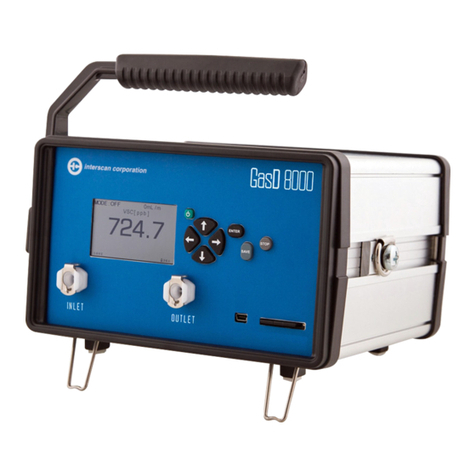
Interscan Corporation
Interscan Corporation GasD 8000 Series User manual
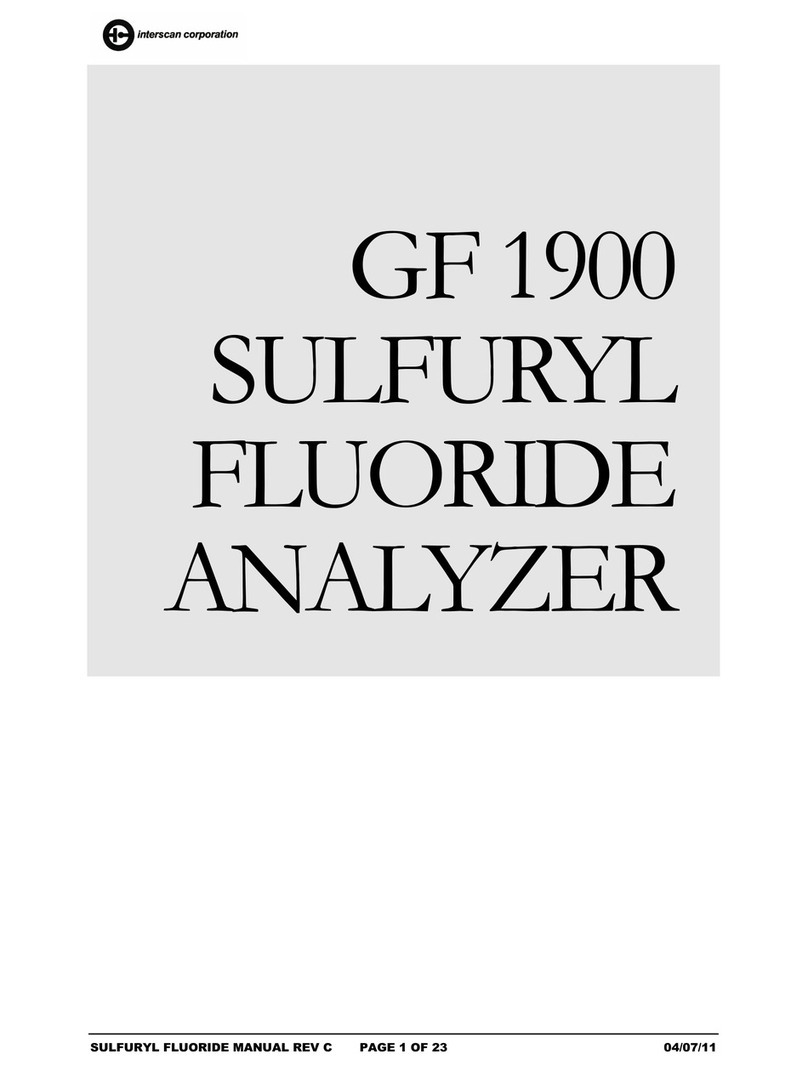
Interscan Corporation
Interscan Corporation GF1900 User manual

Interscan Corporation
Interscan Corporation 4000 Series User manual
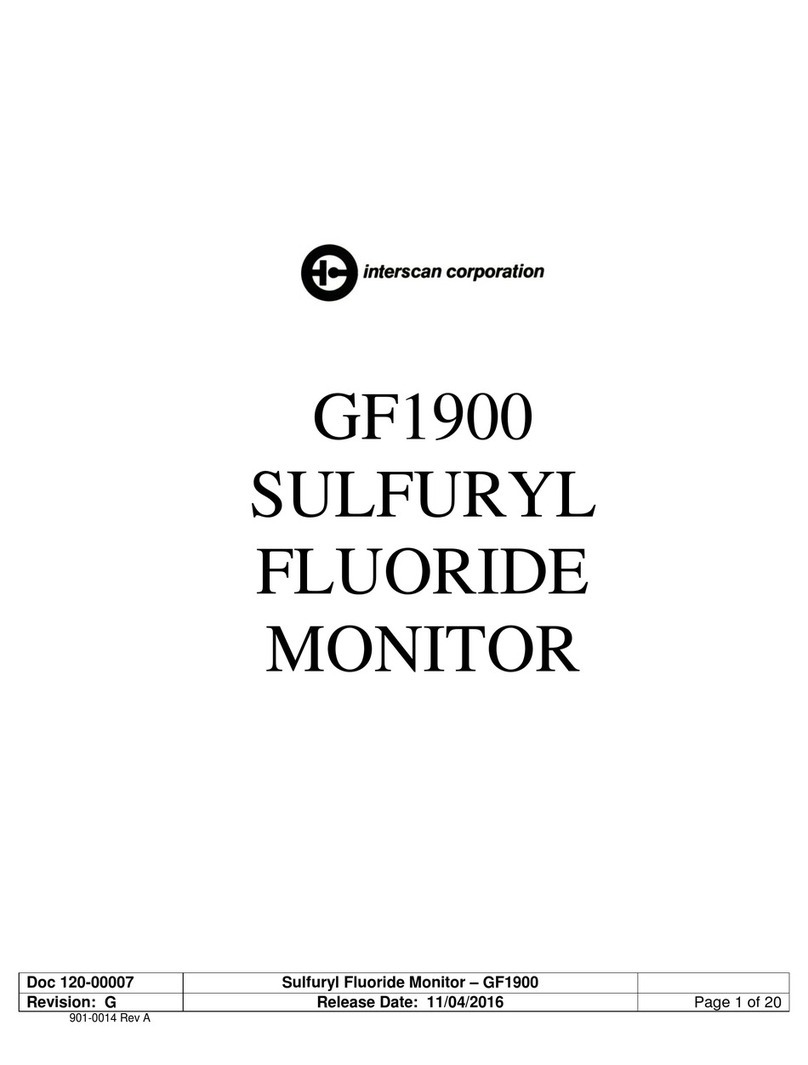
Interscan Corporation
Interscan Corporation GF1900 User manual
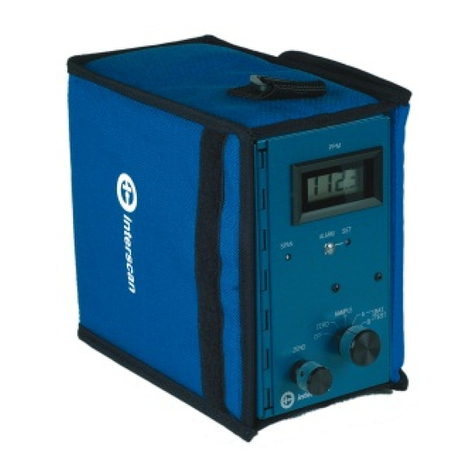
Interscan Corporation
Interscan Corporation 4000 Series User manual


